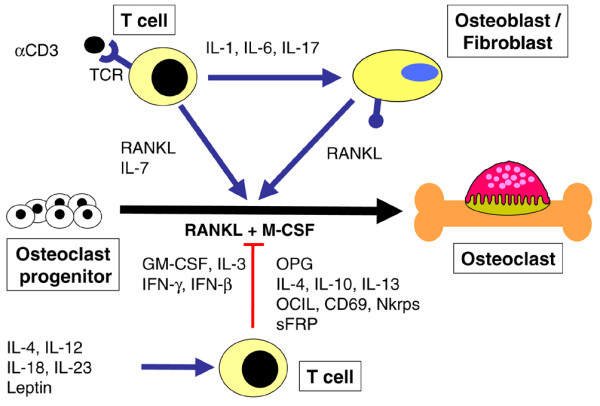Figure 1.

Osteoclast differentiation. Cells of the mylomonocytic lineage (appropriate sources for in vitro differentiation are cells from bone marrow, monocytes, spleen or RAW 264.7 cells) under the influence of macrophage-colony stimulating factor (M-CSF) and receptor activator of NFκB ligand (RANKL) differentiate into osteoclasts. Depicted above this differentiation pathway is the potential role for T lymphocytes in enhancing or fulfilling this process. Upon activation of osteoclasts following engagement of the T cell receptor (TCR), T lymphocytes may produce several factors that promote osteoclast formation (RANKL and IL-7) or the production of RANKL by fibroblast and stromal cells (for example, IL-1, IL-6, IL-17). Below the differentiation pathway, the inhibitory actions of T lymphocytes are presented. T lymphocytes produce a vast array of inhibitory molecules, and several of these are elevated in response to IL-4, IL-12, IL-15, IL-18, IL-23 and osteoprotegerin (OPG). GM-CSF, granulocyte macrophage-colony stimulating factor; sFRP, secreted Frizzled-related protein; OCIL, osteoclast inhibitory lectin.
